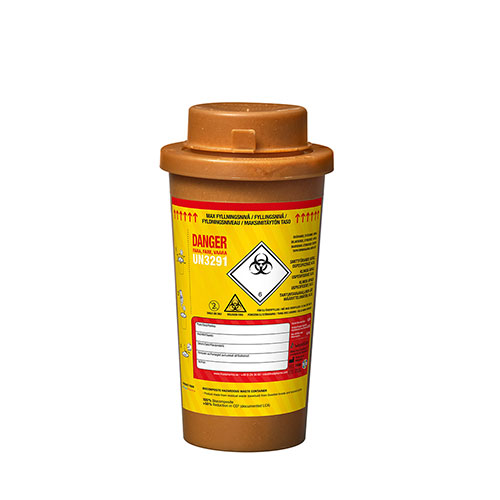Vial coring and disposal of sharps
Vial coring and contamination
Vial coring is when a small piece of a vial’s rubber cap breaks off and gets into the vial itself and/or the fluid inside. This is generally caused by repeated insertion of needles through the vial cap. There is not much clear evidence about the risks of vial coring but potential issues include the possibility of drawing up and injecting small pieces of rubber. This is not necessarily dangerous but probably best avoided.
Another issue is that the hole in the vial cap may be large enough that it stays permanently open and allows air, dust and other contaminants to enter the vial. It may also allow fluid to leak out if the vial is not kept upright. Overall, while the risks associated with vial coring are not entirely clear, there are safeguards which are helpful and relatively easy to implement.
There are various steps which you can take to reduce the risk of vial coring:
- After puncturing the cap of a new vial the first time you use it, it is generally advisable to reinsert the needle through the same hole for subsequent injections.
- It can be helpful to use narrower gauge needles for drawing up medication. Depending on the carrier oil and viscosity of the HRT that you are using, it may be possible to use 25-30 gauge needles for drawing up.
- After puncturing the cap of a new vial for the first time with a standard sharp drawing needle, you can use blunt drawing needles to draw up medication for subsequent injections. Using blunt needles will help prevent coring and also help prevent the risk of needlestick injuries.
- When inserting needles through the vial cap you can use what is called the 45°-90° puncture technique. This involves inserting the needle at a 45–60° angle with the opening of the needle tip facing up (i.e. away from the stopper). As the needle enters the vial, a small amount of pressure is applied as you slowly increase the needle to a 90° angle. The needle should be at a 90° angle just as the needle bevel passes through the stopper. You can use 45–90° puncture technique both the first time you use the vial and for subsequent injections and you can also do this with both sharp and blunt needles.
Disposing of needles
Never dispose of the needles in the household trash!
Pharmacies can dispense, free of charge, a safe box (sharps container) to dispose of syringes and needles. Once full, you can bring back the box to a pharmacy. They usually don’t ask any questions, and this won’t necessarily be seen as sketchy, as many people perform self-injection legally, especially insulin.

Feedback
Was this page helpful?
Glad to hear it! Please tell us how we can improve.
Sorry to hear that. Please tell us how we can improve.